Beau Desert sits at over 700 feet on Cannock Chase, land that at one time was a royal hunting forest then used as a hunting ground for the Bishop of Coventry and Lichfield. The Bishop created a deer park and hunting lodge named Beaudesert, Norman French meaning beautiful and lonely place. Beau Desert Golf Club was formed from the remnants of the Hednesford and District Golf Club in 1920. After leasing the land at a nominal rate for many years from the Marquess, representatives of the club purchased the golf course at a 1932 auction for £4000 despite only having a mandate to bid £2500. It is rumoured that the two agents were in their cups after a luxurious lunch and bid against each other! A heavy tax burden and generous disposition led the Marquess to eventually knock the price down to £2400 and the completion of the sale was finalized in 1936.
Despite original representations to the Forestry Commission insisting that trees should not come within 30 yards of the fairways, Beau Desert is today a heavily treed course. The lower reaches of the Chase were extensively mined and the trees served to block the views of industry. Unwittingly, this program of tree planting destroyed several thousand acres of heathland which the Forestry Commission is now partially re-establishing. The club too seems to be embracing its heritage by encouraging heather to re-populate the course with the removal of some trees. Due to the mining, subsidence has been a continual worry for the club. “Unruly” greens and the occasional appearance of uninvited hollows prompted the club to call in golf architect F.W. Hawtree. His plan to tame some greens was never fully carried out because the members feared continued subsidence would negate their efforts.
It may be surprising to some that a course so neglected by rating panels could feature no less than three All England candidates in #s 5, 7 & 9. The fifth is a one off and one of the great holes in England. The downhill drive swings hard left and back up another hill, over a large cross bunker, to a narrow green which is low on the ends and high in the middle! The mound front right is a curious feature which impacts the strategy of the hole far more than the framing mounds which were coming into vogue at the time Beau Desert was built. Walking toward the 6th it is apparent that Beau Desert is a hilly course with approximately 100 feet of elevation change and the observant golfer will notice there are distinctly advantageous sides of fairways to play from to counteract the effect of sloping green sites. Utilizing grade level entries to the front of the greens combined with raised backs is a trademark of Beau Desert. If Fowler left these as purely grade level greens, they would not be puttable at practically any speed. The confounding slopes and contours, aided by the subsidence, make up what this author considers one of the best sets of greens in England.
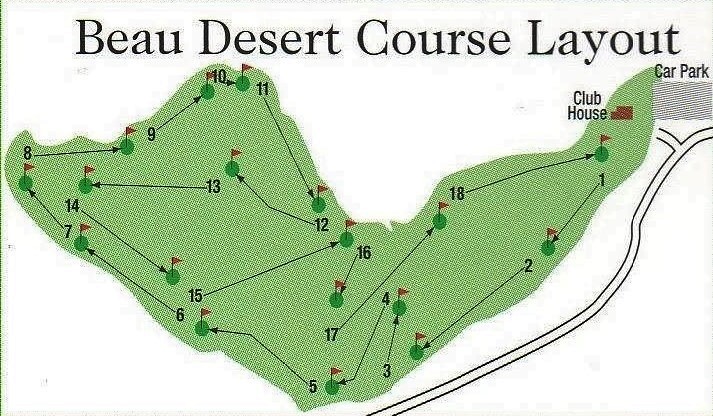
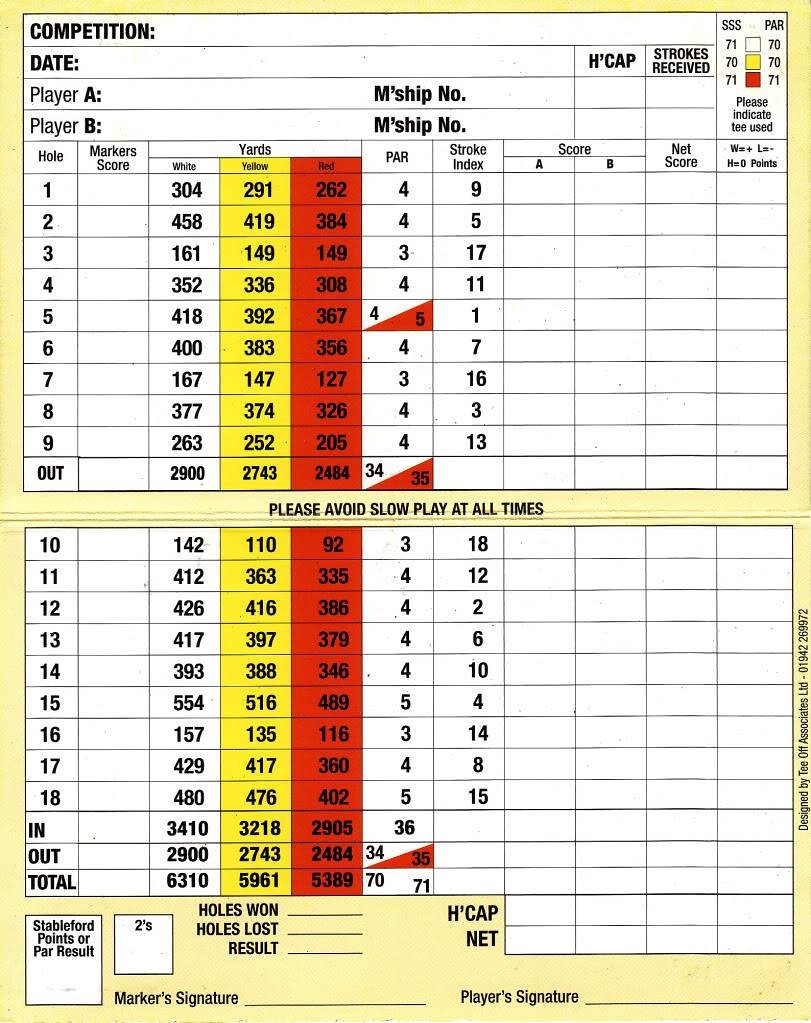
The mild opener plays over a 19th century gravel pit and can cause more grief than one might expect. The bunkers up the right were recently removed.
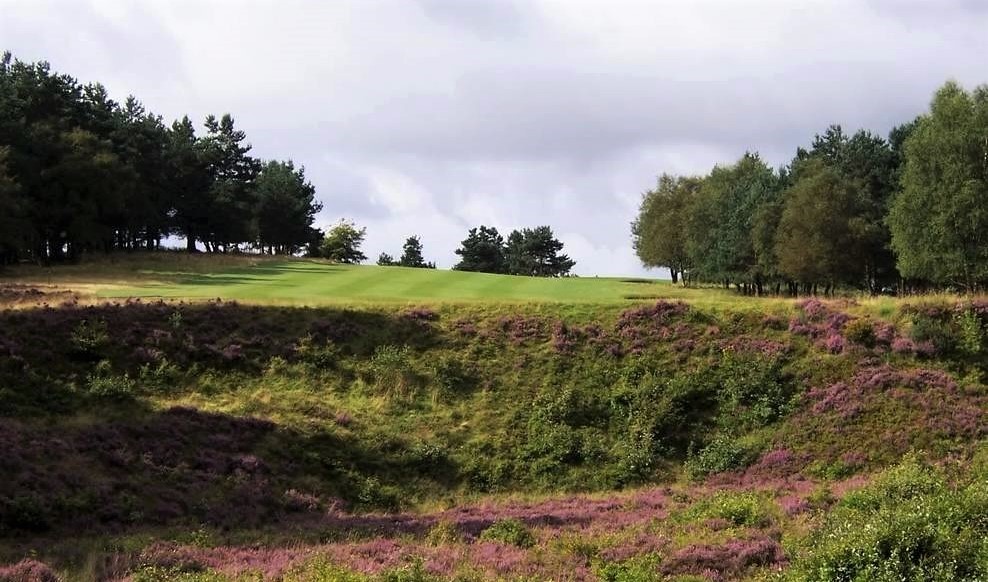
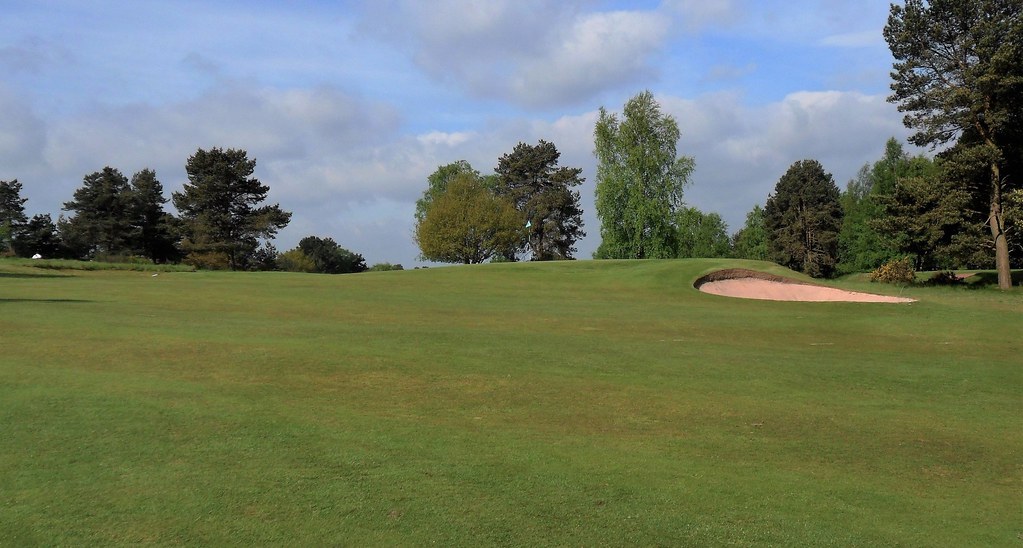
The second used to be more interesting when the tee was left of the 1st green; creating a legger left against the terrain. In recent years the club seems to have taken the decision to play off a tee right of the 1st green. The hole remains good if a bit less compelling. A tricky short hole, the 3rd is visually deceptive in that once on the green it seems like putting away from the tee is uphill when in fact it is downhill.
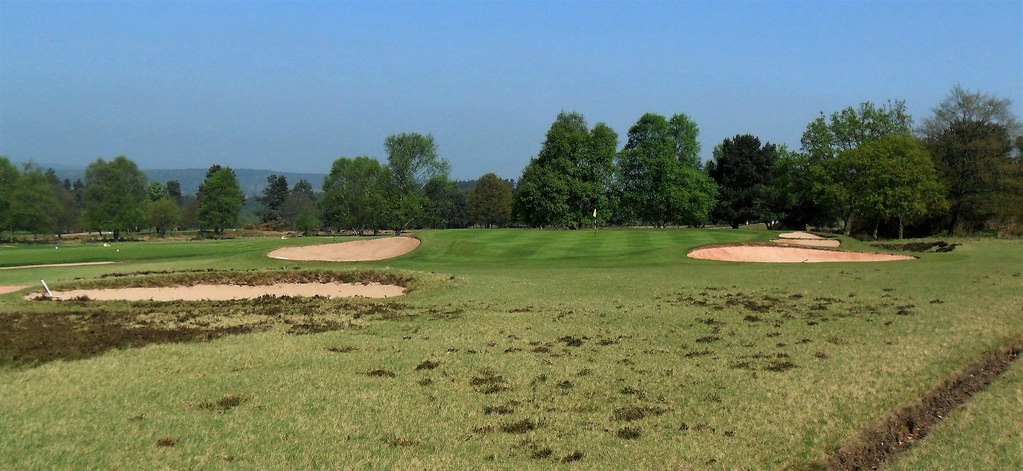
A short par 4 legging hard right, the 4th is for many a lay-up hole. However, the downhill approach remains delicate. An All-England candidate, the 5th slings hard left and downhill then climbs to a hard to hit green with a large mound guarding its right side. Tree clearance and bunker work have made a huge difference. Not only is the left bunker visible from the tee, but there is a new bunker on the right at the bottom of the hill. For those who miss the fairway, there is a large crossing bunker perhaps 70 yards short of the green which is very similar to the second hole.
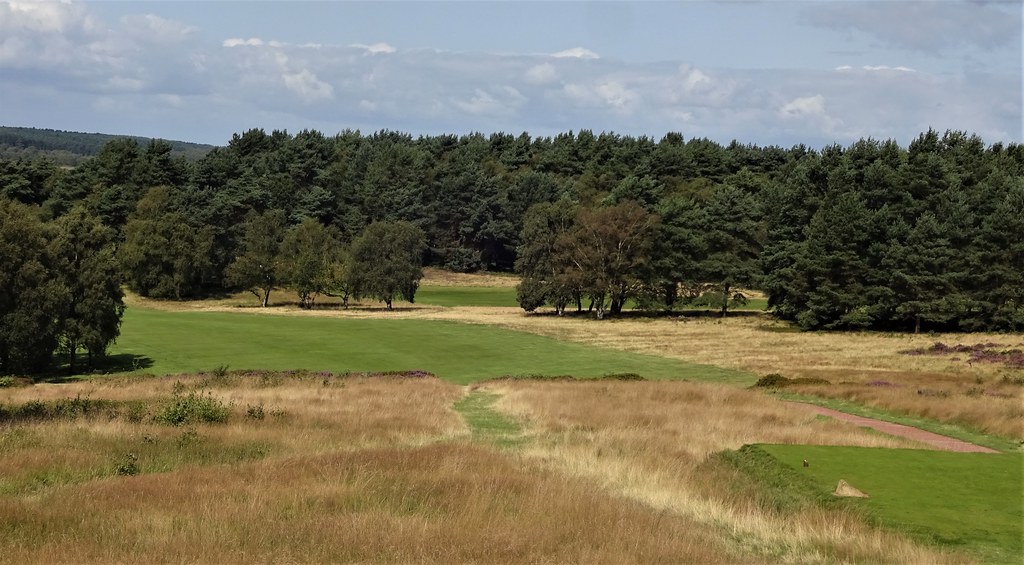
Looking back toward the tee.
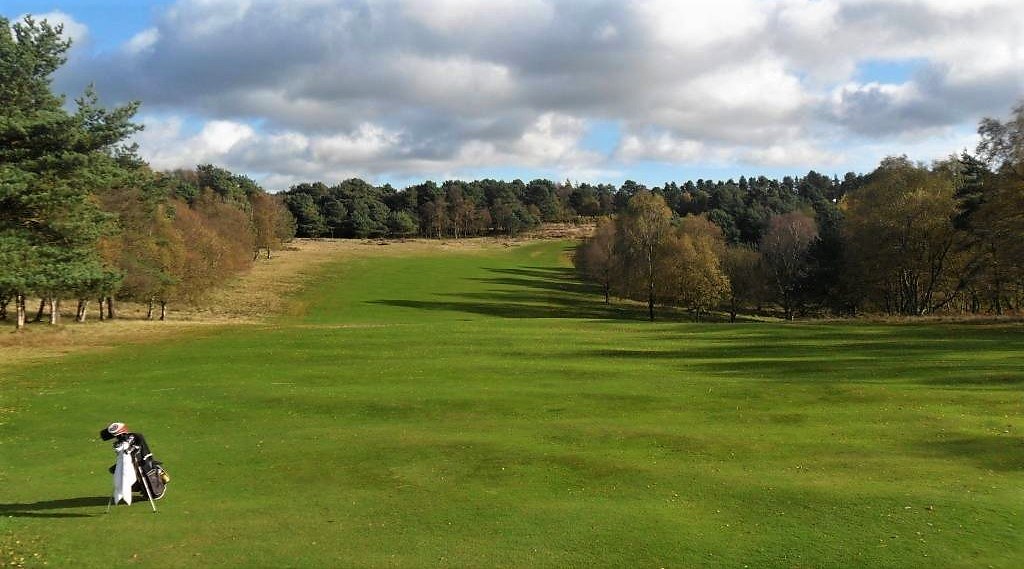
Behind the green, the front section of the green can't be seen as the two ends are low and the middle is the highest section.

Dead straight, the 6th plunges downhill to a green which swings wildly left. Some trees behind the green have recently been cleared because the 7th green can be seen from the 6th fairway. Hopefully the penny will drop for the club and the remaining trees will be removed.

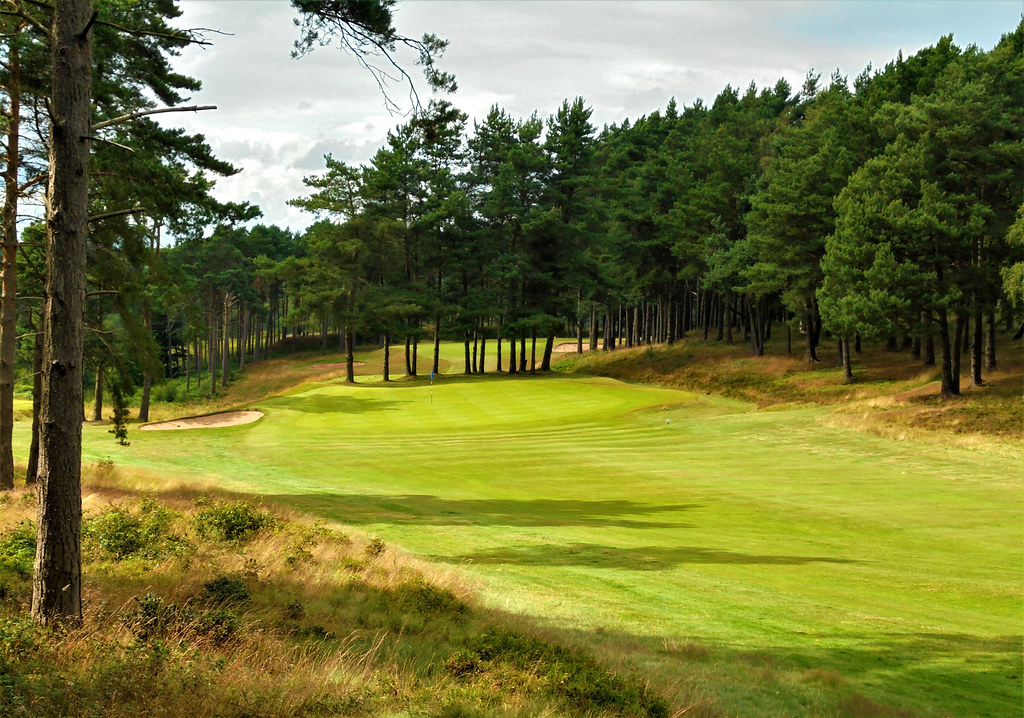
Another All-England candidate, the 7th is a Fowler version of the Redan, although it is quite similar to Gibraltar. In recent years serious tree work is making it possible for the hole to shine as brightly as Fowler imagined. After and before.

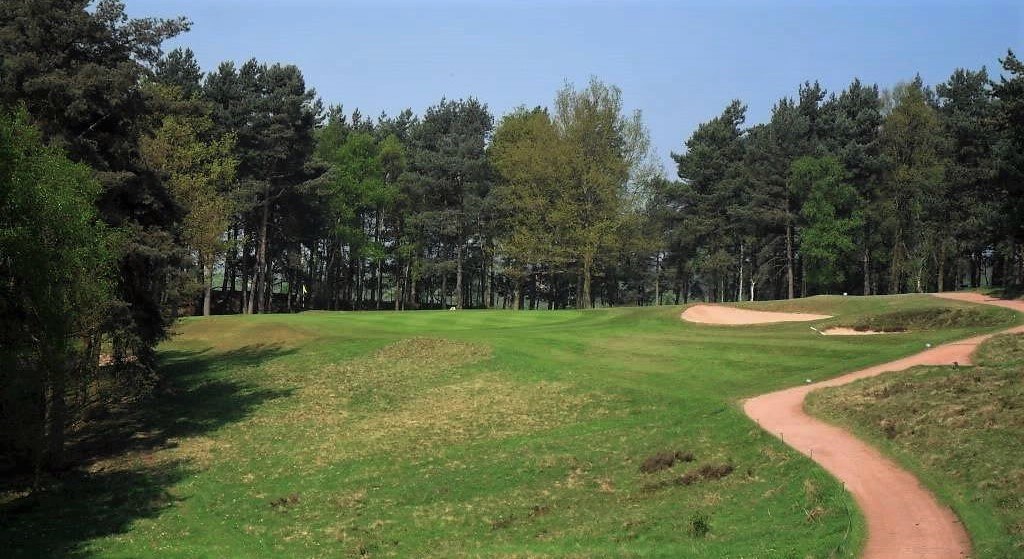
A legger left heading deceptively uphill, the 8th features another green which moves a tremendous amount left to right. The 9th also had tree work recently, though the results are not as dramatic as on the 7th. However, this great hole has been compromised by narrowed cut lines.

The good short holes continue with the 10th; a carry shot over a cross bunker.

A typical gulley found near many greens.

A slippery hole, the 11th moves just a bit more than appearances suggest, bringing the left trees very much into play.
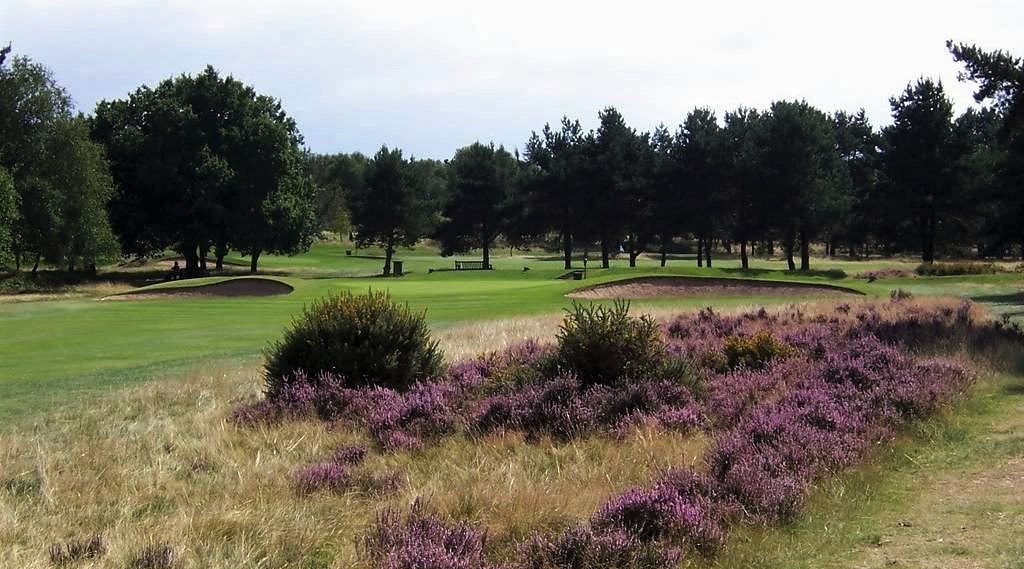
The green also moves left. There is an odd bit of apron to the rear of the green which would make an excellent Sunday hole location if converted to short grass.
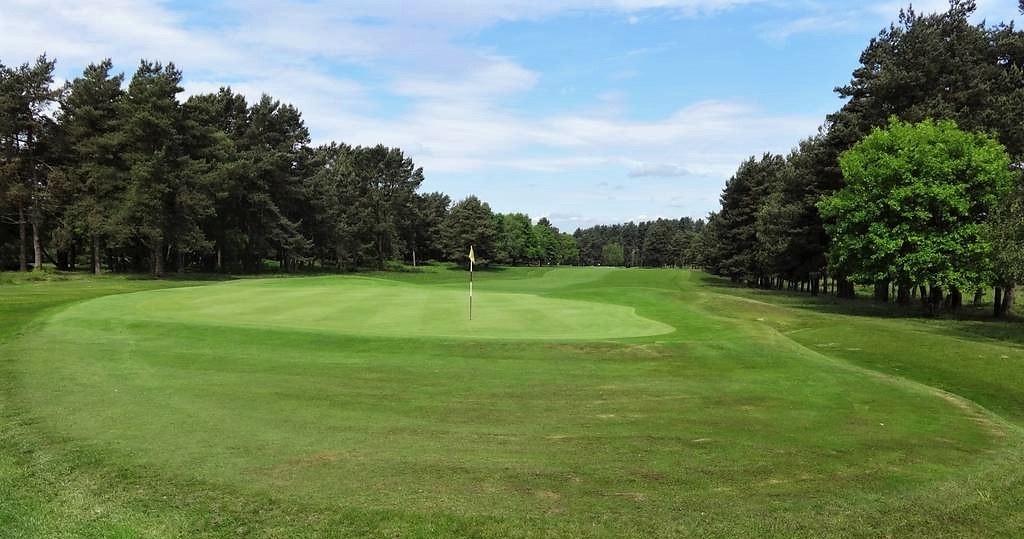
I used to admire the double dogleg 12th through tight tree lines, however, with the advent of big carry equipment, the gambler's paradise feature of the hole has largely been lost. Cutting over the trees on the right is a weighty advantage which moderate cappers can now achieve. I don't know how the hole was originally intended to be played, but it may be time to clear trees right and left.

A large mound and swale protect the green.
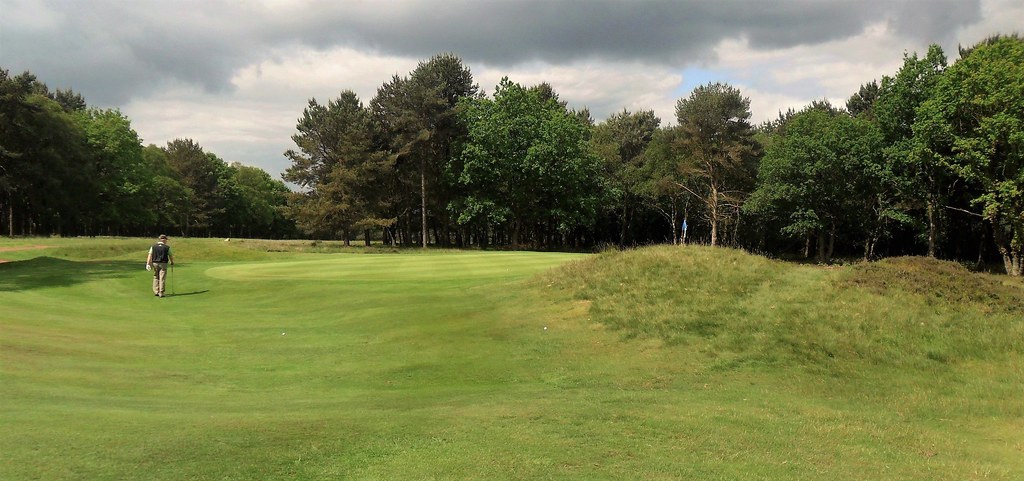
Another good hole, the two-shot 13th plays a bit left and downhill. Featuring an outrageous green, the 14th is as engaging as it is difficult. Many greens meet the fairway at grade level because they are built up quite a bit in the rear.

On occasion there are heather patches on the banks!

Split by the Himalayas, the three-shot 15th is quite demanding despite its relatively modest length. At one time the Himalayas used to form the horizon with no visible fairway beyond when standing on the tee. Subsidence has slowly lower the humps.

After a blind second, the lay-up area leaves a troublesome approach. The green shifts left a ton, I think due to subsidence.
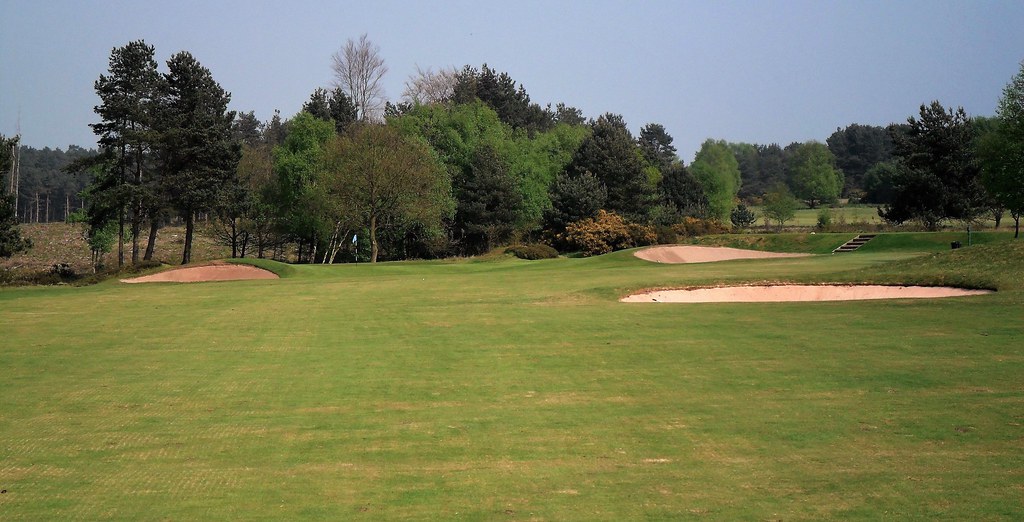
Playing over a cross bunker, #16 is a short hole with yet another difficult green. There can be little doubt that Beau's set of greens is not only one of the largest in England, but also one of the best.
Front left view.
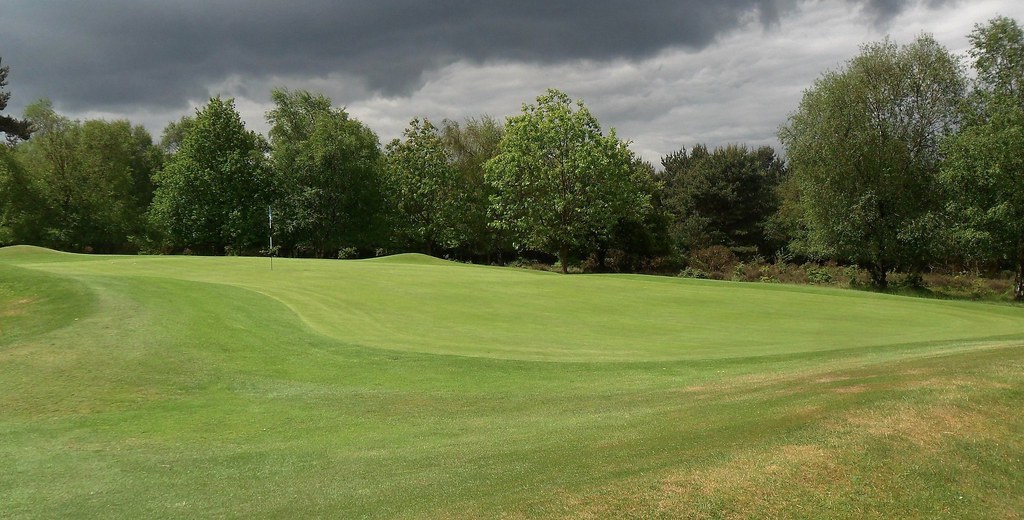
Front right view.

Rear view.

The routing essentially takes the golfer clockwise around the perimeter of the property with several sojourns to the interior. The final two holes close the loop in style. Broken ground once again thwarts the long drive and leaves an approach swinging left on 17.

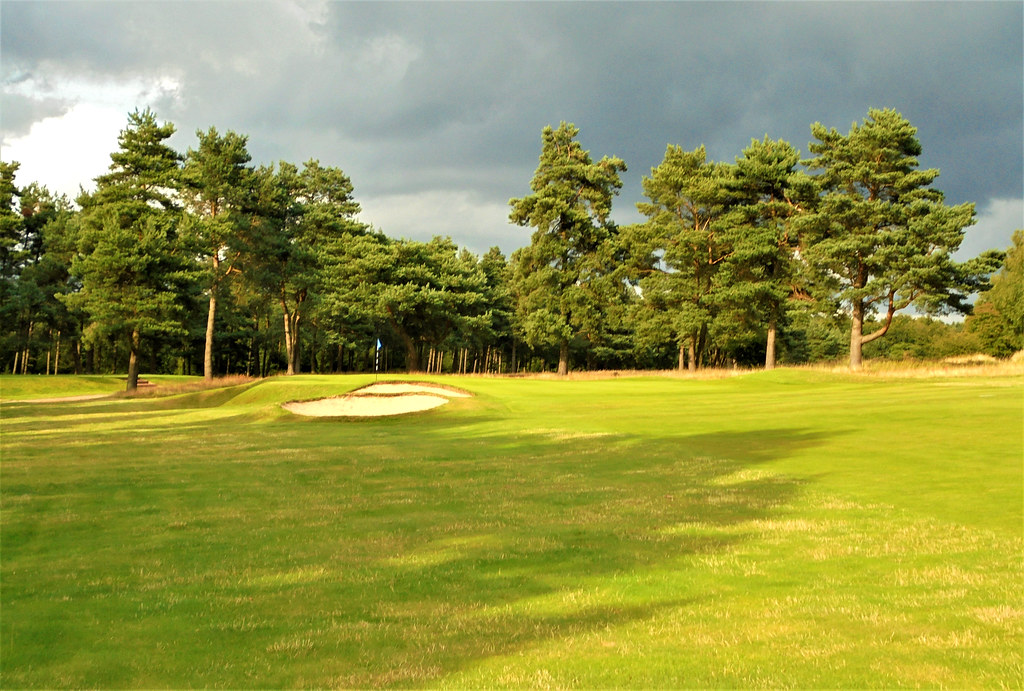
The course length isn't onerous, but several holes make it difficult to bang away off the tee; the 18th used to be one such hole. The break in the fairway with two bunkers was split up and staggered during the winter of 2022-23. Its an improvement and distinguishes itself from other late in the round holes such as 15 & 17. Before & after.



I don't know how many people I have seen fail to make the carry to the immense green. If I didn't know better I would say the yardage markers are incorrect

Before & after...after photo taken from 1st tee. The horrible trees behind the green were replaced with a berm.
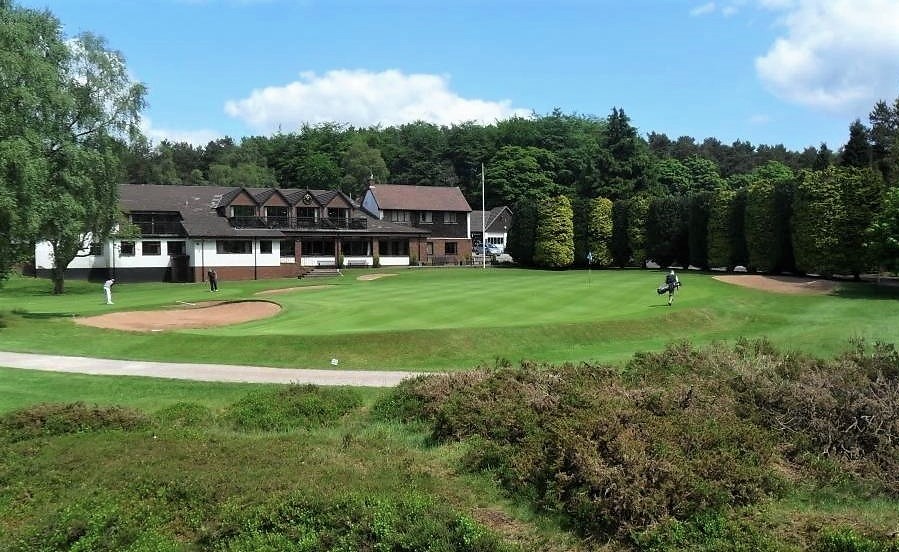

There can be little doubt that Beau Desert is one of the very finest courses in the Midlands. Bernard Darwin heaped praise on the course; “Here might be one of the very best of courses for the turf is excellent and there is a flavour of Gleneagles about it. It stands high and is pleasanter in hot weather than cold, for the wind can blow there with penetrating shrewdness.” If one is intrigued enough to visit Beau Desert, be sure to look at the many photos in the clubhouse which highlight what the course looked like when Darwin wrote the above words – absolutely magnificent.
The design may warrant as high as a 2* if the glaring tree problems, obvious short comings with much of the bunker work, poor fairway lines, overly penal rough and greens extending back to near original pads are ever sorted out....I think that highly of this Fowler gem. It would seem the club is tackling some of these issues and it is all the better for the work. Lets hope the good work continues. 2023
Ciao